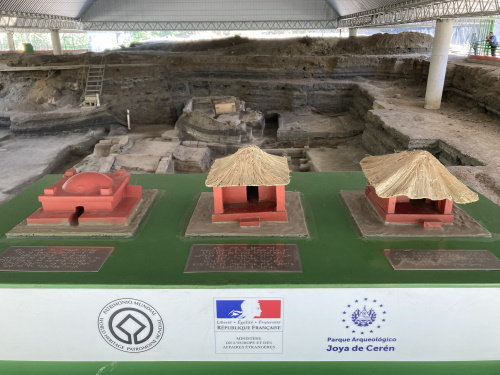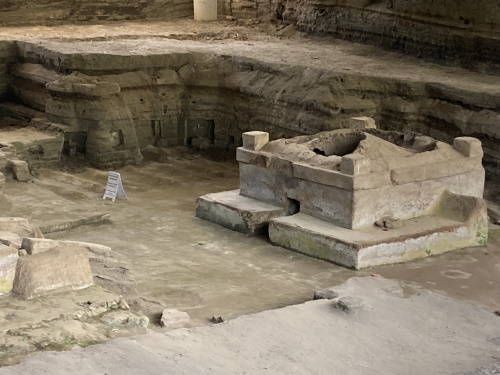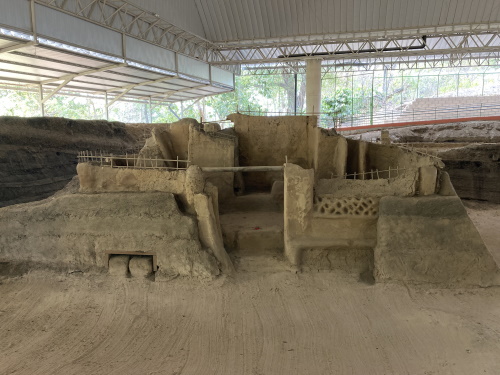Blog WHS Visits
WHS #778: Joya de Ceren
I visited the lovely site of Joya de Ceren in February 2022, not long after its full reopening. El Salvador's one and only WHS had been closed for a full makeover and subsequent Covid measures for most of the time since late 2019. The site from a visitor’s perspective is now in a very good state. Striking is the French support that has gone into the restoration (they apparently paid 70% of the bill of 1.3 million US dollars). The museum has been modernized, good information panels have been placed (in Spanish, English, and of course in French), the site has been made accessible for the blind and the protective shelters have been made higher/larger so that you have a better view of the ruins.
I covered the 40 kilometers between San Salvador and Joya de Ceren in a genuine chicken bus: bus 108 that leaves from Terminal de Occidente. The ride cost only 0.50 US dollars and took 1.5 hours. The bus stops in front of the entrance of the archaeological site, just after crossing a large orange bridge. On the way back I had a “better” bus, with actual seats instead of benches – for an additional 0.25 US dollar I was back in the capital within the hour.
Probably as the result of the refurbishments, the entrance fee for foreigners has risen from 3 to 10 US dollars! They do practice foreigner pricing here and the locals still pay the previous 1 US dollar (notwithstanding that they can afford a 10+ dollar meal in a PizzaHut or Denny’s). I arrived at the same time as a van with American tourists. I avoided them immediately by entering the museum first. The day before I already went to the (National) Anthropological Museum of El Salvador, where you can see similar things. The finds mainly consist of ceramics and food remains. The archaeologists preserved the latter by means of plaster casts, just like in Pompeii.
The excavation site is protected by two large coverings. The buildings of this Mayan village were made of adobe with thatched roofs. I had prepared myself for a setting like a tell (a pile of rubble), but the actual buildings are very much intact. The archaeologists here leave a large part of the ash layers (up to 10m high!) intact, they still offer some stability to the vulnerable adobe remains. Excavations are still underway and some parts of the site are covered up.
You walk around the site via a designated route, from where you view the excavations from above. I actually walked this route twice, as the American guide was a bit too loud and I skipped parts on the first round. The route passes 10 named excavated objects. A typical building is perhaps the biggest eye-catcher of the entire complex: a temazcal, a sweat lodge that was used for purification. It has a domed roof that was slightly damaged by the volcanic eruption or the preceding earthquake. At the end of the route lies a replica of this temazcal, where you can also view this structure from the inside (on your knees).
Under the second covering, the remains of a kitchen, storage rooms, and agricultural gardens can be seen. Joya de Ceren for example has the first identified instance of manioc cultivation in the Americas. The House of the Shaman is also located there. The shaman was a woman— she led the maize harvest rituals. A ritual mask has been found.
This site of course does not have grand stone monuments like the big Mayan cities. But a village like this (it probably had 200 inhabitants) also entailed more than a few huts and sheds. Combined with the onsite museum, it gives you a good idea of daily life in Mayan society at the fringes of Mesoamerica.
Els - 6 March 2022


